About the Book
Clinicians and patients can no longer wait for answers to fundamental questions regarding how to properly evaluate and treat concussions and traumatic brain injuries.
Doctors, those suffering, and their loved ones have questions that need to be answered:
When will someone emerge from a coma?
Can the fear of going out in public be overcome?
Will problems pertaining to memory and anger management go away?
Will the individual be able to work again?
Filled with real stories of patients, Concussion Traumatic Brain Injury– From Head to Tail answers these questions and explores how this modern epidemic is often misdiagnosed or left untreated. Unsound definitions, rules of engagement, and limited scientific evidence have caused us to lose generations of people who suffered the fate of this condition.
Explore some of the different themes in my book…
Chapter 1 - Tragedy in an Instant
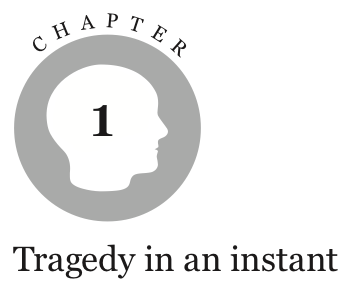
PEOPLE WITH CONCUSSION and/or traumatic brain injury (TBI) and their loved ones know the reality of facing a radical change in an instant. Can you imagine being a fully functional human being, caring for your family, holding down a job, or performing as a student in school, then suddenly not being able to do any of these at a level you were previously able to perform.
Meet Mario (Case #1), a 24-year-old dental student from Venezuela, an avid sportsman who lived for the thrill and exhilaration that only a few experience while participating in extreme sports. Mario suffered a form of TBI that is rarely seen – second impact syndrome (SIS).
Learn about how Mario's premature return to playing sports before recovering from his first concussion led to his second injury that nearly took his life. His severe brain injury caused him to be in a comatose state for over a year. Mario was failed by the medical system which led to his substantial disability, find out how.
Chapter 2 From Head to Tail... What is the BHET Method?
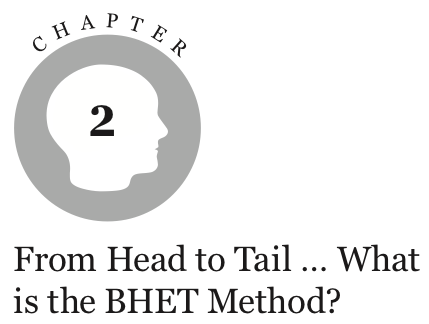
The Brain Hierarchical Evaluation and Treatment (BHET) method challenges the current methods employed to evaluate and treat persons with TBI, while also providing an explanation for the hierarchical disorganization and subsequent reorganization that occurred in Mario’s brain and the over 50 million victims worldwide who are also affected by this condition each year.
The BHET method is about finding the missing pieces of a puzzle and reorganizing it in a hierarchical manner, between the highest and lowest levels of brain functioning (from head to tail). This method utilizes a multidimensional approach with certain dimensions and domains that piece together the puzzle to better understand concussion/TBI. The pieces of the puzzle include defining brain organization based on signs and symptoms, severity and location of injury, elapsed time since injury, functioning levels, and degree of recovery.
While the issues of concussion and TBI have been popularized in the modern media, there remains a lack of understanding among all stakeholders regarding the longitudinal issues in time and space that confront society related to this kind of injury. Brain injury as a concept is unlike any other condition, in that it impacts the computer-like processing system that directs the physiology of our bodies and how they operate, who we are, and what others perceive us to be. In fact, it is not merely about the health care provider and the patient; it involves a web of societal concerns, including the family unit, our policymakers, the legal system, funding sources, research interest, media, and our social organization. Those affected by this condition know very well the challenges it poses to our quality of life, economic stability, and social order.
Discover how the BHET method is transforming the way clinicians and scientists evaluate and treat patients with TBI. Learn about their success.
Chapter 10 - It’s about time we pay attention!
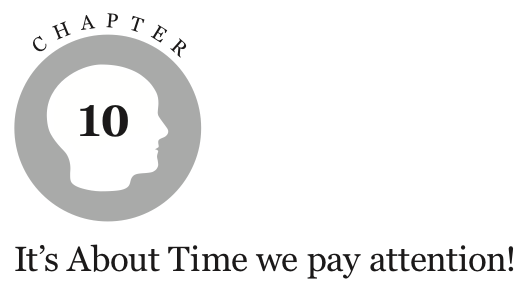
I recently learned that the American Academy of Neurology receives more inquiries about concussion and TBI than other neurological disorders. For those of us who attend meetings in the field, we can see it has become a very popular subject of discussion. It is clearly a sign that greater action on these issues is necessary. What the public fails to understand about TBI/ concussion is that it is a significant cause of disruption in our social order and is responsible for disruption in families, causing divorces, child and spouse abuse, loss of wages and jobs, criminal and antisocial behavior, and substance abuse. In fact, whenever I evaluate a patient with history of anger management, violence, panic attacks, motion sickness, headaches, panic disorder, autism, severe anxiety, phobias, OCD, attention deficit, bipolar disorders, and even schizophrenia; I ask them or their family members if they recall even the most insignificant incident of trauma to the head. An individual may have hit their head as a child, infant, or adult on the cupboard, on the side of the pool, during a sporting event, while navigating the monkey bar, or even in a car or bicycle accident. These individuals may not have thought much of the fact that they were dizzy, experienced vertigo, faced trouble concentrating, or had a headache and that these symptoms lasted for days or weeks. I can recall that, in the not too distant past, physicians such as emergency room doctors, neurologists, neurosurgeons, physical medicine and rehabilitation specialists, pediatricians, primary care physicians, and psychiatrists would say to patients that they have not suffered a TBI or concussion, as they did not experience loss of consciousness, despite hitting their head and having symptoms. In my practice, I see patients having suffered major disruption in their lives, who despite being evaluated and treated by competent health care providers, failed to receive appropriate treatments due to this issue of determining whether they have had a concussion. This often arises from the fact that they themselves or their healthcare providers entirely missed that they had a TBI or concussion sometime in the past, since many of these injuries occurred during childhood. When clinicians do not explore the issue of concussion and TBI, they can miss important facts in the diagnosis and treatment of patients. Many of these patients may report dizziness and vertigo while on elevators, driving, or on a boat and plane, but they were not able to see the link to a past traumatic event. From my work in the field and from reviewing medical literature and media stories, I have seen that the issue of TBI/concussion, its impact, and its effects are very complex and at times not well understood. Raising these issues has been long overdue.
Let's look at the impact of concussion on the penal system, the criminal justice system, and the military.
The field of brain injury has been popularized due to the many stories from the sports world and in particular American Football that are only now receiving attention in the media. In addition, the stories of the returning soldiers from recent military conflicts in Iran and Iraq have raised our awareness on the impact of blast injuries in causing concussion, which greatly affects the wellbeing of the affected soldiers and those with whom they interact. Until the Iraq and Afghanistan wars, TBI was not labeled as a signature injury of war (Walter Reed 20017, Department of Defense 2008).
A review of several studies indicates that the prisoners surveyed and evaluated in various prison systems have a prevalence of TBI/ concussion between 65% and 92%.
Learn how concussions cause disruptions in our social order, leading to disproportionate incarceration rates, alcohol and substance abuse, and PTSD.
Chapter 13 - Time is Brain
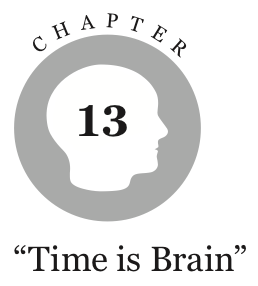
IN THE CASE of a stroke in the settings of trauma, the compromise of blood supply to the brain requires immediate restoration in order to protect the nerve cells and the supporting cells. To illustrate, JL Saver published an article in a journal called “Stroke” in 2006, wherein he noted that when there are interruptions of major blood vessels to the brain, approximately 120 million neurons, 830 billion synapses (connections), and 714 kilometers (447 miles) of myelinated nerve fibers are lost each hour (Saver 2006).
A compromise in blood circulation, oxygen, and nutrition to the brain can result in the loss of brain cells and their connection if the circulation, oxygen, and nutrition are not restored rapidly following injury.
Secondary effects of trauma
“Time is Brain” deals with protecting neurons before and after an injury from dying and trying to restore their function in as short a time as possible. Once those neurons are lost, there is generally only limited nerve cell regeneration possible in the brain to where there can be significant difference. However, this depends on the severity of the injury, area of the brain involved, and age of the brain. “Neuroprotection” is a term used to describe this form of protection in the nervous system.
- In neuroscience we say, “Time is brain,” and the faster we provide definitive intervention, the more likely we are to preserve and prevent cell death. Thus, we significantly improve brain function and the hierarchical organization.
- Learn more about the science of neuroprotection following brain injury.
Chapter 26 - So what is the story about CTE?
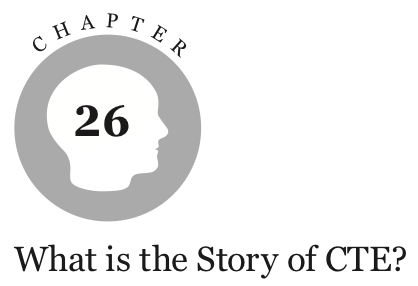
CHRONIC HEADACHES, FADING memories, damaged relationships, lost dreams, and unfulfilled lives – this intense state of human suffering brought on by CTE has been described by an ex-NFL player as “a living hell”.
Chronic traumatic encephalopathy (CTE) has changed the perception of brain injury and its potential impact on current and future generations. The Mayo Clinic defines CTE as brain degeneration that is likely to be caused by repeated head traumas. At this time, CTE can only be definitively diagnosed after the patient’s death (Mayo Clinic 2013).
This condition causes a form of dementia similar to Alzheimer’s for which there is no known cure. There are several fascinating stories of famous ex-NFL players who took their own lives and donated their brains to a brain bank that studies CTE.
Discover what scientists are uncovering about the brain’s of individuals who have experienced repeated injuries to the head due to contact sports and military conflicts.
